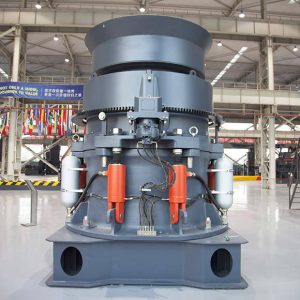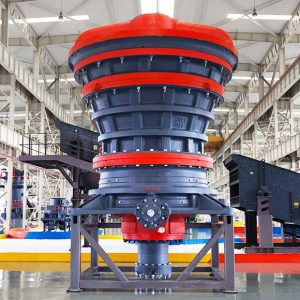Cone crushers and gyratory crushers are two essential types of crushing equipment used in mining, construction, and aggregate industries. While they share some similarities, they also exhibit distinct features that make each suitable for specific applications. In this discussion, we will delve into the key features of cone crushers and gyratory crushers, highlighting their differences and similarities.


**1. Operating Principle:
- Cone Crusher:
- Operates on the principle of compression crushing.
- Material is fed into the crushing chamber, and the mantle gyrates within the concave, creating a squeezing action that crushes the material.
- Gyratory Crusher:
- Operates on the principle of gyratory motion.
- The central vertical spindle gyrates within an eccentrically mounted mantle, causing a circular motion that crushes the material between the mantle and concave.
**2. Design and Construction:
- Cone Crusher:
- Has a conical-shaped crushing head.
- Typically has a vertical shaft that is supported by the bottom bearing.
- Adjustable discharge opening allows for control over the size of the crushed material.
- Gyratory Crusher:
- Has a cone-shaped crushing head.
- The main shaft is suspended at the top and is housed in a shell or frame.
- Adjustable eccentricity allows for variations in the crushing chamber.
**3. Size Reduction Ratio:
- Cone Crusher:
- Generally produces a more cubical product.
- Suitable for secondary and tertiary crushing stages.
- Gyratory Crusher:
- Produces a more elongated and less cubical product compared to cone crushers.
- Primarily used for primary crushing.
**4. Throughput Capacity:
- Cone Crusher:
- Generally has lower throughput capacity than gyratory crushers.
- Suitable for medium to fine crushing applications.
- Gyratory Crusher:
- Often has higher throughput capacity than cone crushers.
- Suitable for large-scale primary crushing operations.
**5. Maintenance and Operating Costs:
- Cone Crusher:
- Generally has lower maintenance costs.
- Easier to access for routine maintenance.
- Gyratory Crusher:
- Can be more complex to maintain.
- Greater challenges in accessing certain components for maintenance.
**6. Application Areas:
- Cone Crusher:
- Widely used in secondary, tertiary, and quaternary crushing stages.
- Commonly employed in aggregates production, mining, and construction.
- Gyratory Crusher:
- Primarily used in large-scale mining and heavy-duty industrial applications.
- Ideal for high-capacity primary crushing.
**7. Cost Considerations:
- Cone Crusher:
- Often considered more cost-effective for specific applications.
- Gyratory Crusher:
- May have higher initial costs but can be justified by higher throughput and capacity.
Both cone crushers and gyratory crushers play crucial roles in the crushing and processing of various materials. The choice between them depends on factors such as the application, required throughput, maintenance considerations, and overall project requirements. Each type has its advantages and limitations, and understanding these distinctions is crucial for making informed decisions in the selection of crushing equipment for specific operations.
